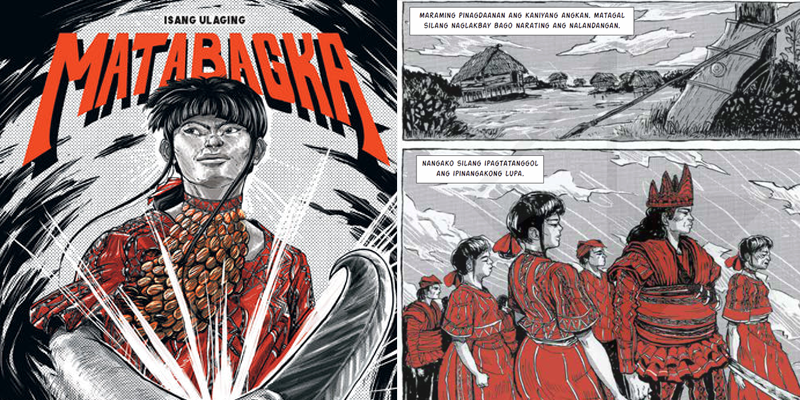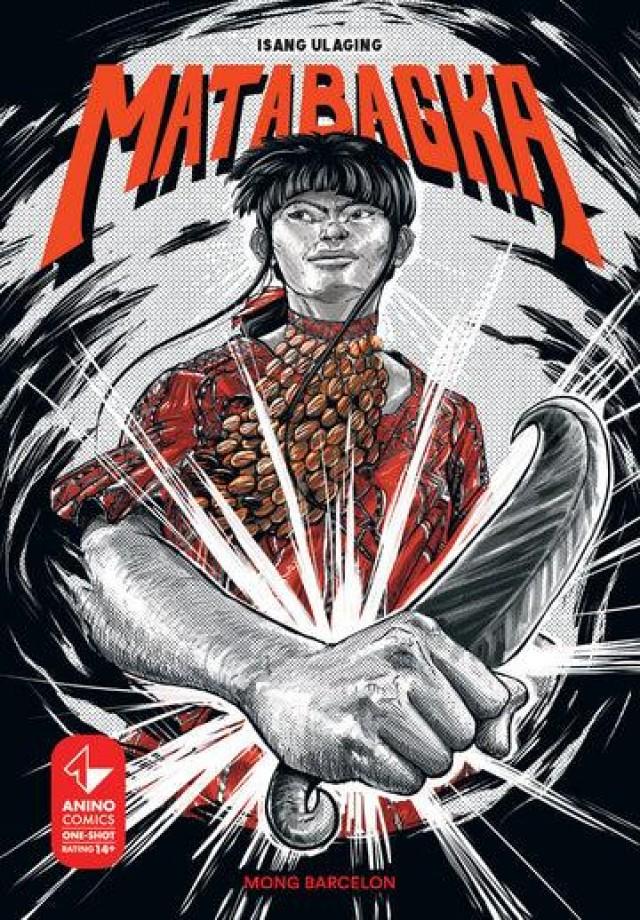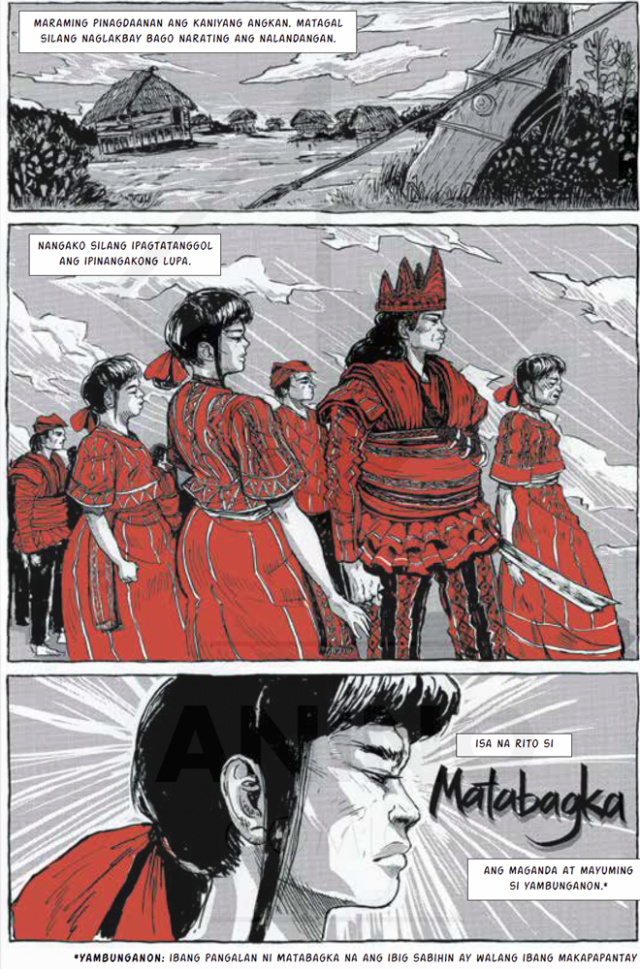Matabagka graphic novel is UP Fine Arts major’s retelling of Manobo epic

Anino Comics recently launched Mong Barcelon’s first graphic novel, "Matabagka: Isang Ulaging."
In an exclusive interview with GMA News Online, Barcelon, a graphic artist from Bulacan, talked about his creative process that led to a book that pivots on one of the strongest woman warriors in Philippine literature.
How did you conceptualize Matabagka?
I originally made Matabagka for my undergrad thesis at UP Diliman, College of Fine Arts. It was not the topic on the top of my mind. But my thesis adviser, the late Sir Neil Doloricon, encouraged me to create a graphic novel, because he knew that I really love creating illustrations.
I encountered the epic of Matabagka as I researched different Filipino folktales. It was originally documented in Ms. Corazon A. Manuel’s 1976 MA thesis, entitled “The Epic of Nalandangan: Study of Two Songs.”
I researched every detail to make it as accurate as possible. I visited museums to see the appropriate clothes, patterns, and objects in the story. I also read other materials that are connected with the culture of the lumad Manobo tribe, where the epic was derived.

For those who are not adept in Philippine folklore, how will you introduce them to Matabagka and the other characters in the graphic novel?
There are only a few main characters in Matabagka. First is the main character, who is Matabagka. She is the sister of the Datu. She is a brave and smart woman who will defy the prejudices of her society.
There is her brother Agyu, the datu and the hero of their land. He is the one who is expected to save their land, but at this time he is too scared of the prophecies.
Lastly is Inhampang. He is the main antagonist and a datu of an opposing kingdom. He is strong and has the ability to control the wind.
Why is the graphic novel called “Isang Ulaging”?
Ulaging is a part of Manobo’s culture. It is an oral tradition that narrates the heroic stories of Agyu and the events that happened to their tribe. The stories of an ulaging were usually sung, and it takes a long duration to recite a whole story.
Why did you choose graphic novel as a medium for Matabagka?
The original transcript of Matabagka’s epic appeared as a long and detailed narrative poem. I decided to turn her story into a graphic novel because I want it to be appreciated easily by more Filipinos, without sacrificing the accuracy of the story. I also considered creating a picture book or an animated film to narrate it. But I thought that a picture book might not be enough to show the details of the story, and the animated film is too difficult to create as of the moment, considering the length of the epic.
How does Matabagka's story represent our history and culture as Filipinos?
Matabagka confirms that even in pre-colonial times, our country already has a rich culture and we have our own identity. It shows the different traditions and way of living that the Lumads might have used to have or see the similar traditions that they still practice.
The epic shows different practices and beliefs that are still recognized and practiced by the Manobo even in our current times.
How will Matabagka's story inspire people, even those who are not fans of the art and the ideology, if there is any, to respond to the call of the times?
Matabagka has a complex storyline and it caters different references of its time. It shows different struggles that might be also derived from the Manobo people’s real life experience.
Aside from the cultural aspect of it, the story of Matabagka can also serve as an inspiration for us. She bravely challenged every prejudices of her society and stood up when every hero of her land was afraid to face a threat to their society. This situation of Matabagka is like a reflection of our current society. Now that our country faces different challenges, we need more Filipinos who are as brave as Matabagka, Filipinos who are not cowards, Filipinos who won’t give up easily when they are threatened by situations even if it seems unwinnable.

What part of Matabagka belongs to you as an artist?
The only part of Matabagka that I can say that really belongs to me are the illustrations. I translated the original transcript into visual form. I gave my personal artistic touch to it by illustrating the story, based on how I understood it, how I used some external references, and the emotions that I felt when I was reading the original transcript.
What illustration styles should we look forward to in the graphic novel?
I always put in my mind that the output that I will produce should have a Filipino vibe. For me, this means that it should be designed intricately because it is natural for indigenous Filipino designs to be intricate and maximalist. I also tried to show the roughness of the story through its illustrations. I used ink and brush for the line art and I intend to show the brush strokes of it.
What is the difference between Matabagka and your other works, and as compared to other graphic novels in the country?
When I was still working on Matabagka, my main objective is to create awareness about the Manobo culture and its epics or folktales. There are a lot of good Filipino graphic novels on Filipino culture and folktales, but there are only a few which are directly derived from a Filipino epic.
Barcelon plans to collaborate with co-artists on various projects, including an exhibit with a Filipino art organization. He also considers retelling another Filipino epic through the same medium.
Anino Comics is an imprint of Adarna House, Inc.
— LA, GMA News




